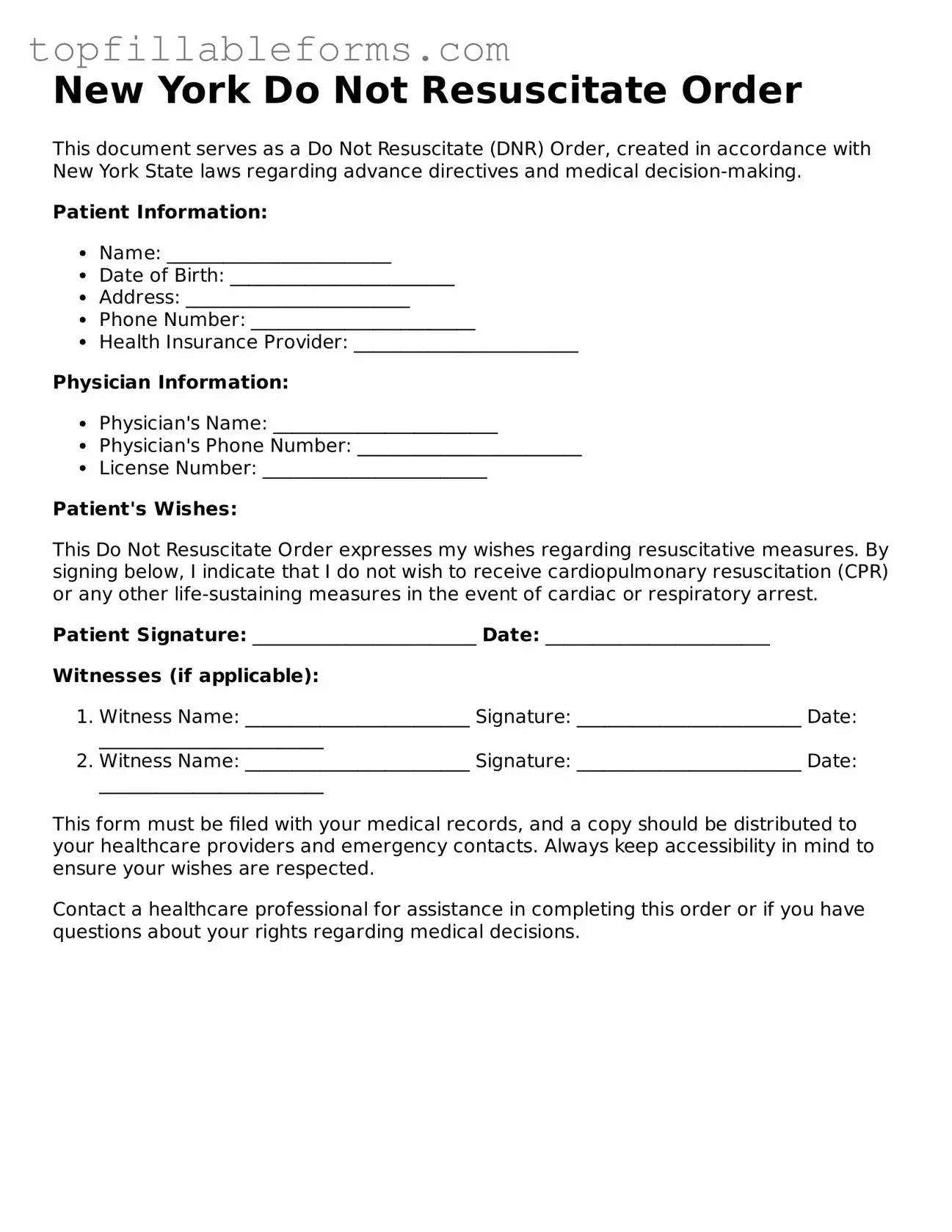New York Do Not Resuscitate Order
This document serves as a Do Not Resuscitate (DNR) Order, created in accordance with New York State laws regarding advance directives and medical decision-making.
Patient Information:
- Name: ________________________
- Date of Birth: ________________________
- Address: ________________________
- Phone Number: ________________________
- Health Insurance Provider: ________________________
Physician Information:
- Physician's Name: ________________________
- Physician's Phone Number: ________________________
- License Number: ________________________
Patient's Wishes:
This Do Not Resuscitate Order expresses my wishes regarding resuscitative measures. By signing below, I indicate that I do not wish to receive cardiopulmonary resuscitation (CPR) or any other life-sustaining measures in the event of cardiac or respiratory arrest.
Patient Signature: ________________________ Date: ________________________
Witnesses (if applicable):
- Witness Name: ________________________ Signature: ________________________ Date: ________________________
- Witness Name: ________________________ Signature: ________________________ Date: ________________________
This form must be filed with your medical records, and a copy should be distributed to your healthcare providers and emergency contacts. Always keep accessibility in mind to ensure your wishes are respected.
Contact a healthcare professional for assistance in completing this order or if you have questions about your rights regarding medical decisions.
